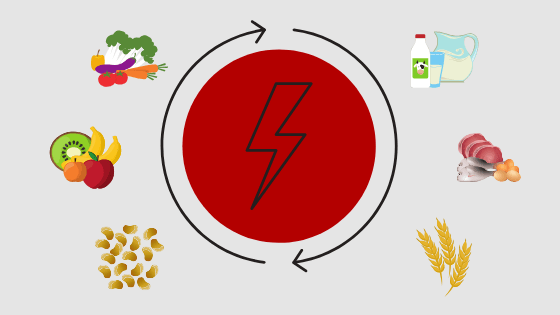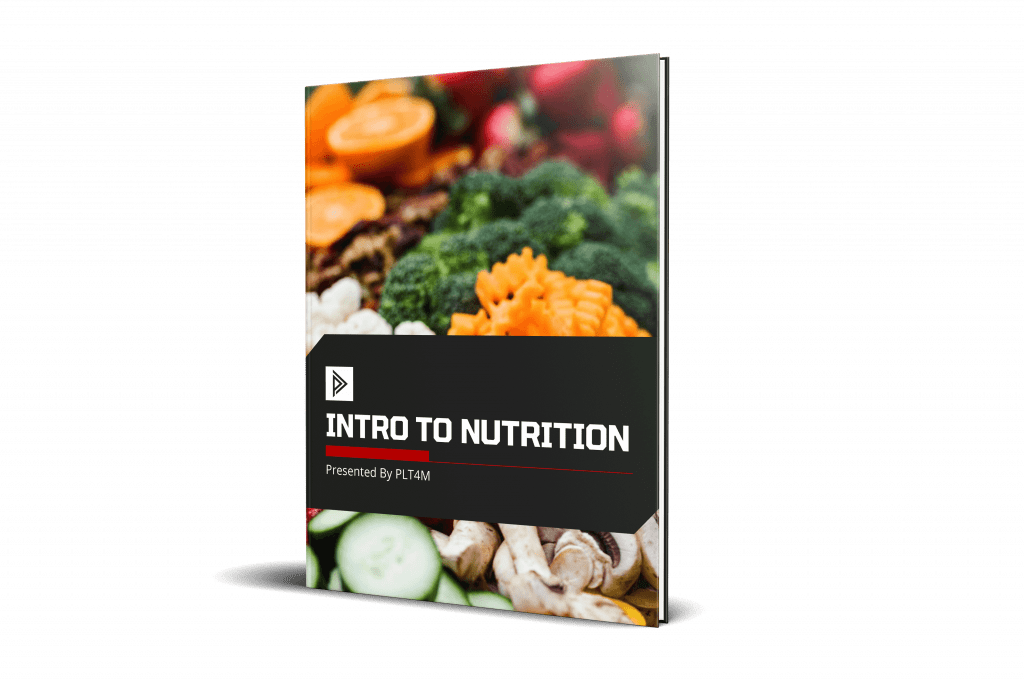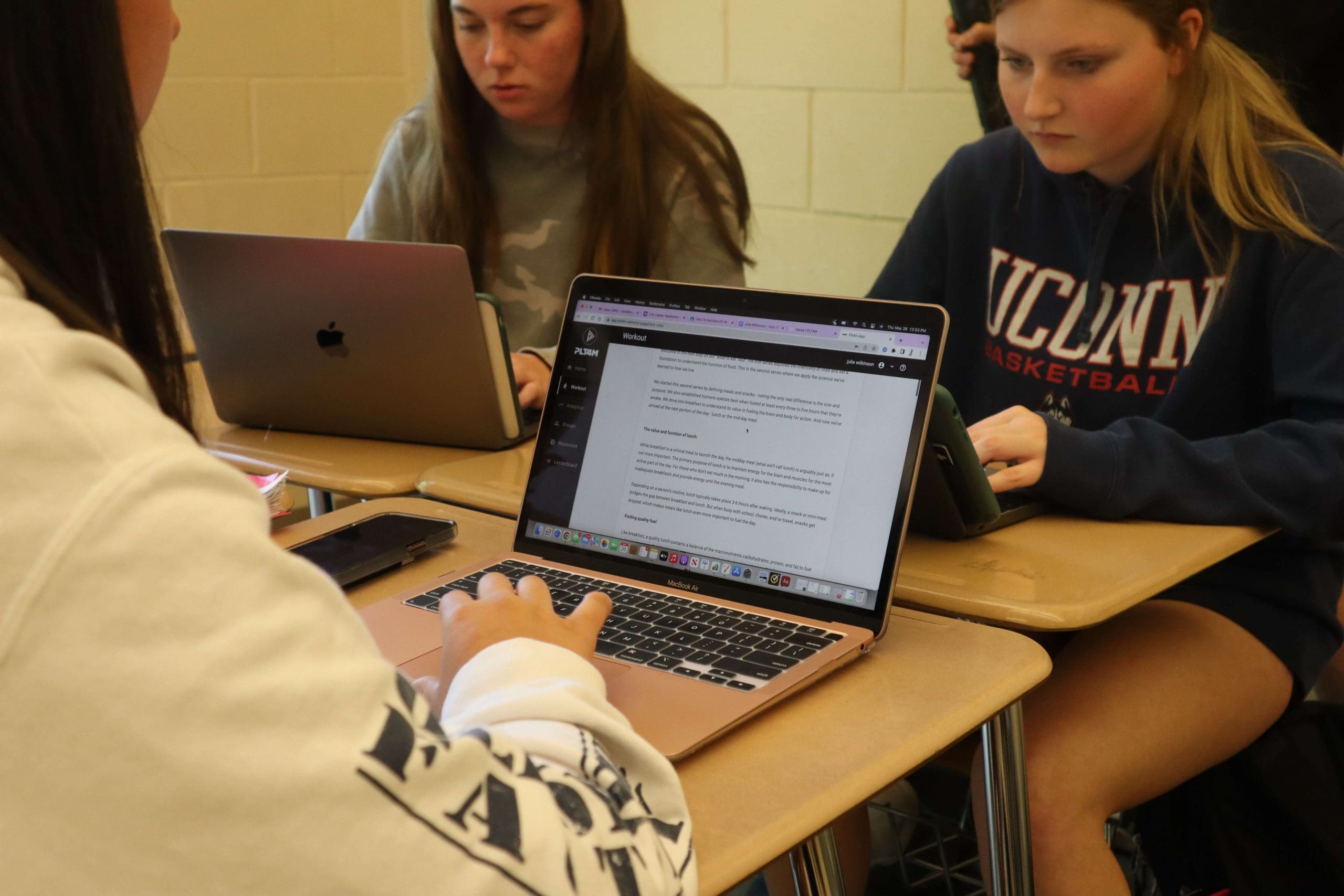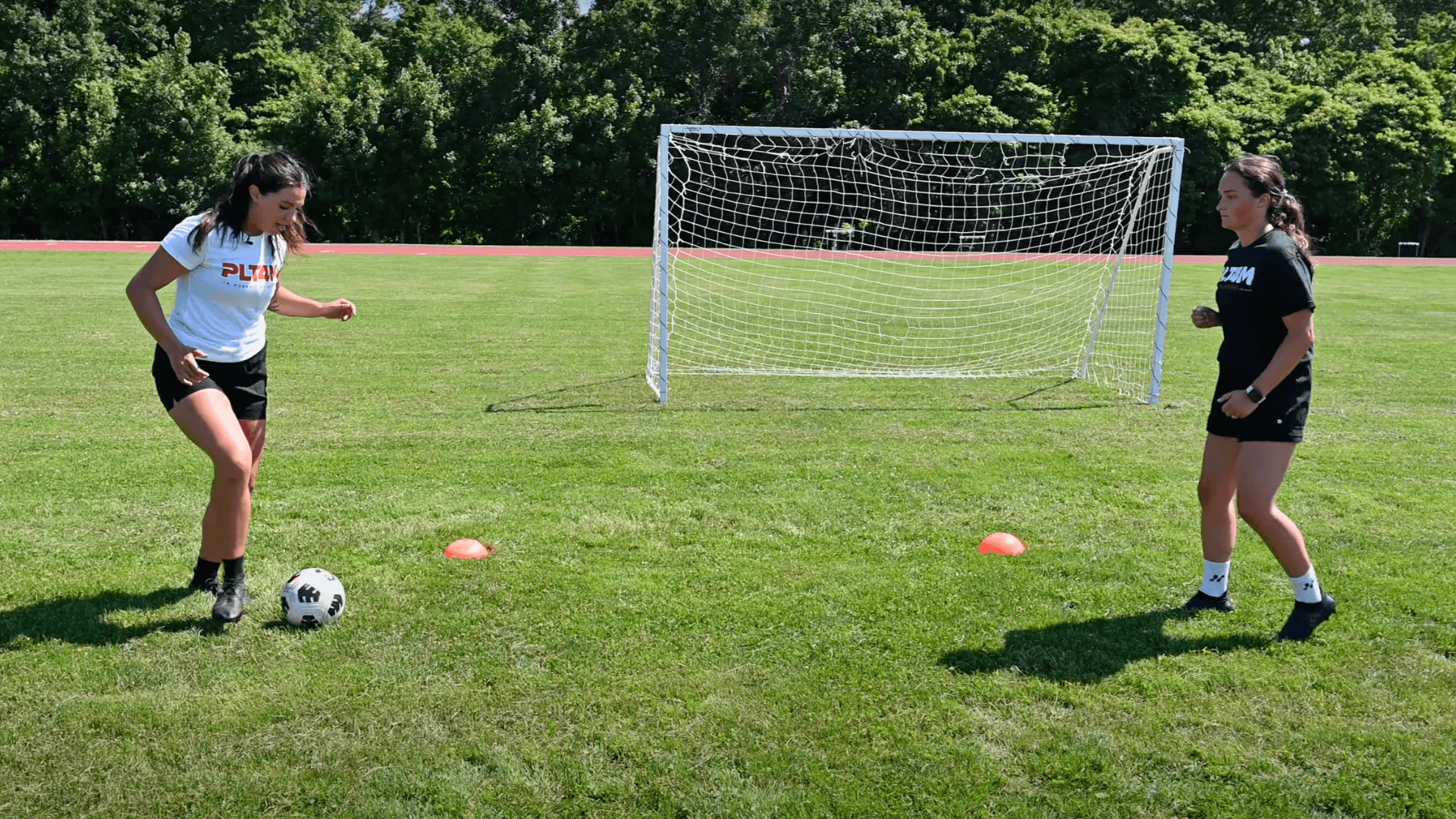Calories are not evil, and they do not need to be avoided. In fact, calories are essential because they are what our bodies convert to energy. In our previous lesson, we talked about what happens when bodies don’t get enough energy. But where IS the energy in food?
There are four chemistries (or types) of calories, and they may sound familiar – carbohydrates, proteins, fats, and alcohol. The first three chemistries are necessary for human health, but the last (alcohol) is not.
These chemistries are not exactly the same as the food groups we were taught when we were younger. Any given food (and food group) can be a combination of energy chemistries.
Looking at food in terms of chemistry instead of food groups is a little complicated at first. But it helps us understand foods that don’t fit cleanly in a food group (e.g., pizza).
And it allows us to get past “good” or “bad” food. Instead, we can look at a food’s chemistry and better predict how it will impact performance and health.
What our body sees when we eat?
Bodies don’t recognize food groups. When we eat a banana, our body doesn’t say, “Ah-ha! A fruit!”
Instead, it sees carbohydrates in the form of sugar, starch, and a little fiber. It also sees a little protein and fat, as well as a slew of vitamins and water.
Here are a few examples of the the energy in our food:
-Fruits: Water + carbohydrate (sugar, starch, fiber)
-Vegetables: Water + carbohydrate (little starch, mostly fiber)
-Beans / Lentils : Carbohydrate (starch, fiber) + protein + little fat
-Meat / Eggs / Fish: Protein + fat
-Grains: Carbohydrate (starch + some fiber) + some protein + little fat
-Milk/Yogurt: Water + Carbohydrate (sugar) + protein + fat
Intro To Nutrition EBook
This E-book comes fully loaded with written and video lessons covering calories, carbohydrates, proteins, and fats.
How many calories do we need?
Now that we have an understanding of “what” calories are, how do we figure out how many to consume? The human body has a wide range of energy needs so it’s difficult to put an exact number on it.
There are formulas and general recommendations, but there can be huge variances based on sex, age, height, muscle mass, and physical activity intensity and duration. Even factors like what we eat, how often we eat, and our mental health can impact energy needs.
But in general, boys between the ages of 13-19 need at least an average of 2000-3000 calories per day, and girls ages 13-19 need at least an average of 1600-2400. But it’s not uncommon for active, growing bodies to need more, and there can be tremendous day-to-day swings in energy needs based on activity.
There’s also nothing magical about the number. Bodies are incredibly flexible, and can easily adapt to increased and decreased intake without changing the body itself.
How do we assess if we are eating too little or too much? How do we do this in an easy and straightforward way that we can apply to our daily lives? In our next lesson, we will explore ways to listen to the body to determine our energy needs.










